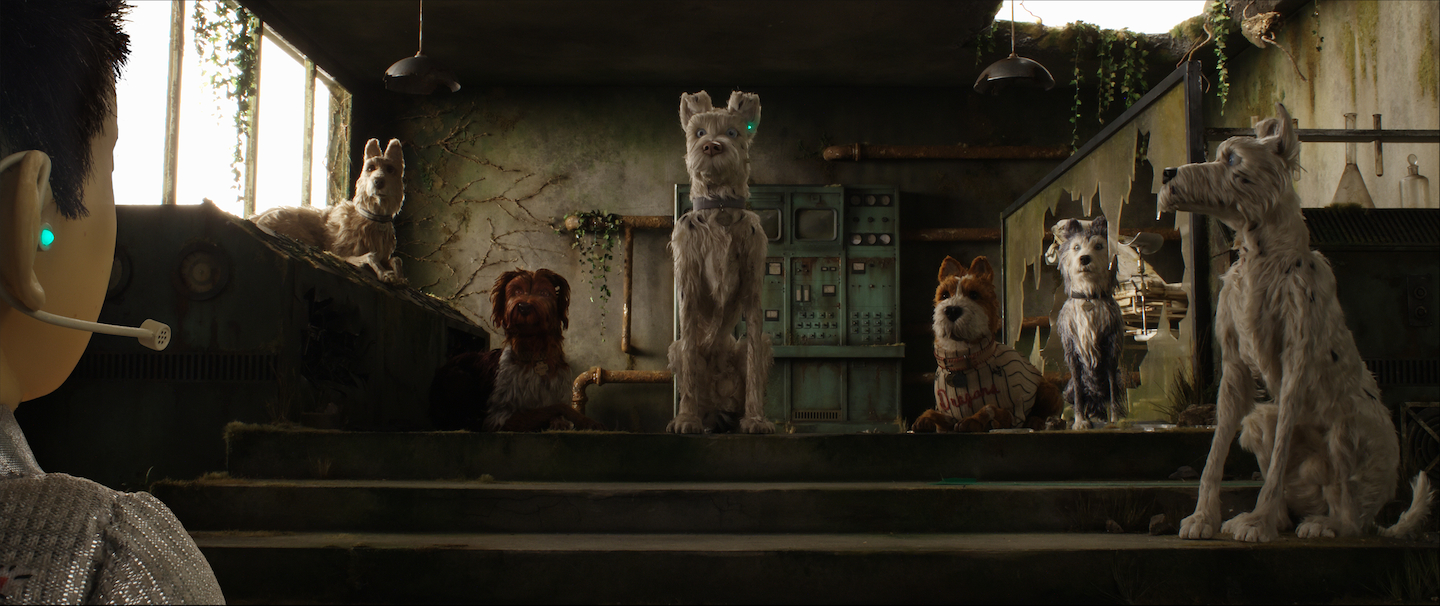Somewhere in Japan, in the not-too-distant future, the canine flu has transformed Man’s Best Friend into an enemy. A corrupt mayor issues a decree that all dogs must be rounded up and exiled to Trash Island, an aptly named offshore dump. The mayor’s 12-year-old nephew, Atari Kobayashi, embarks on a solo mission to reunite with his beloved guard dog. There, the tiny pilot is accompanied by a pack of endearingly neurotic canines on an odyssey through the hills of garbage and valleys of waste. This is the Isle of Dogs.
It looks and feels like a Wes Anderson film, yet it’s unlike anything the acclaimed director has ever done — including his previous stop-motion effort, Fantastic Mr. Fox. Perhaps that difference is due to a more subdued palette of grays and browns that saturate Trash Island, where the vibrant colors of Megasaki City prove increasingly elusive. Perhaps it’s because dogs tend to meet violent ends in Wes Anderson films, or because a movie primarily set in and around mountains of garbage isn’t what you’d expect from a filmmaker known for his precise compositions and attention to detail.
It’s a quality, along with an instantly recognizable idiosyncratic style, that Anderson shares with stop-motion animators, like Jason Stalman, the lead animator on Isle of Dogs. “He keeps things very clean,” Stalman says of the visionary director. “The beauty of working on this film is he will do anything it takes to get that particular shot to work.”
And Anderson is nothing if not incredibly particular. “You have to keep a very open mind when you try to see what he’s visualizing,” says Stalman. However, “he’s very good at giving you what he wants.”
Like Fantastic Mr. Fox, Anderson’s love of the old Rankin/Bass Christmas specials is apparent in the look and feel of Isle of Dogs, but more overt is his affection for Suzie Templeton’s Peter and the Wolf – a title familiar to fans of Anderson’s Moonrise Kingdom, which incorporated the narrated version of Sergei Profokiev’s classic composition.



